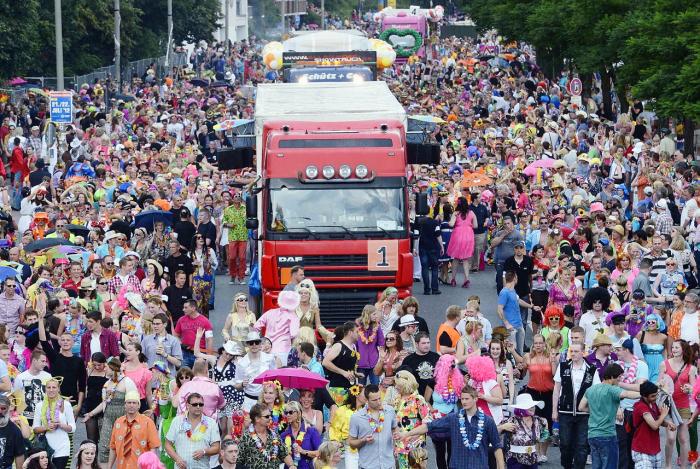One of the BRATs writes about her experience at Hamburg’s famous Schlagermove parade.
By ROXANNE LOW PAU-LING
EVERY July, people from all over the world look forward to the famous Schlagermove parade in Hamburg, Germany.
The celebration started with 50,000 visitors during its first year in 1997, but that number is dwarfed by the 500,000 who turned up for this year’s event.
The joy of the annual Schlagermove is not just in following the music trucks and singing along with the loud German schlager songs (an easy-listening, sentimental style of European pop/folk music), but also in getting all dolled up.
For the 16th edition of the parade, held earlier this month, people were already gathering at the meeting point in Heiligengeistfeld, Hamburg, at around 1pm.
You just couldn’t miss the people who were going for Schlagermove. On the trains and the streets, they were all dressed up in floral prints, crazy-coloured wigs and funky, over-sized sunglasses to fit in with the fashion of the 70s (when schlager music was at its peak). At the very least they would have something colourful on, like a flower necklace, so they wouldn’t seem under-dressed.
In the afternoon, the first of 45 music trucks left the starting point on St. Pauli Street and each truck was fancily decorated according to different themes. They were equipped with really powerful speakers. Usually, the deejays on the trucks are accompanied by schlager fans (or schlagerfans), who buy tickets online that range from €79 to €90 (RM305 to RM345) in order to be at the very heart of the parade. Tickets are usually sold out way ahead of the event.
The one truck that stood out for me was the one with all the schlagerfans dressed as Smurfs (with white ‘Smurf hats’ and full blue body paint).
The crowd was much larger compared to last year’s. Even though it began to drizzle halfway through the parade, that didn’t stop the schlagerfans.
Despite getting wet under the drizzle, which slowly grew to a downpour, the people stayed energised and continued to follow the trucks to the end of the parade.
It seemed like everyone in the massive crowd was totally hyper. Everyone was just enjoying the party atmosphere and singing along to the music – even though they don’t know the songs all that well.
“We don’t normally listen to schlager songs, but we still came for the atmosphere!” said a young Hamburger.
The whole parade lasted for about six hours, ending when the last music truck reached the finish line on Reeperbahn Street, the centre of Hamburg’s nightlife.
What is schlager?
German schlager music came about during the 50s, and remained fairly popular throughout the 60s and 70s with its folksy, sentimental pop sound.
The older, more sentimental schlager style isn’t exactly what you’d call trendy in this day and age, but somehow, it remains popular among Germans of all ages, at least judging by the crowd at this year’s Schlagermove.
Some of the more frequently played songs during the parade were Er Gehört Zu Mir by Marianne Rosenberg, Hamburg Meine Perle by Lotto King Karl, Ti Amo by Howard Carpendale, Anita by Jürgen Markus and Ein Bett im Kornfeld by Jürgen Drews.
My personal favourite was a song that goes by the title Moskau, sung by Dschinghis Khan.
I was told that schlager songs tend to have simple, uncomplicated lyrics, and are therefore very helpful for German-learners! If you’re trying to learn the language, why not give schlager a try?


Tell us what you think!